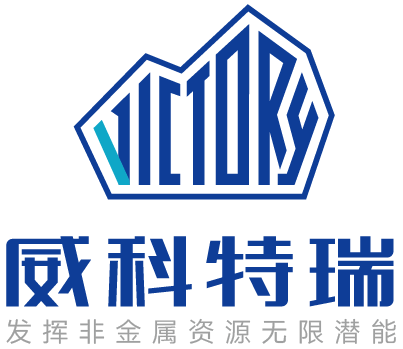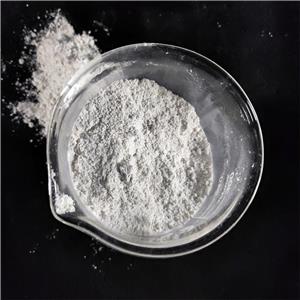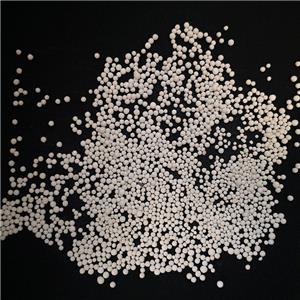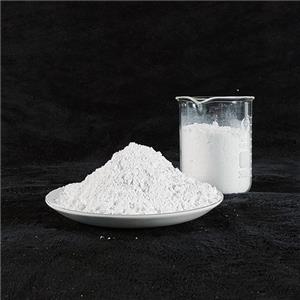Deep analysis of magnesium fertilizer
Abstract
Magnesium is an essential nutrient in plants and plays an important role in the physiological and biochemical processes of plants.However, magnesium is often neglected in agricultural production, resulting in frequent magnesium deficiency phenomenon, which is related to the one-sided understanding of magnesium in agricultural practitioners.In order to provide guidance for agricultural production, this paper mainly introduces the magnesium demand and absorption process of plants and the application of magnesium fertilizer.
preface
The normal growth of plants requires the absorption of a large number of nutrient elements, and the lack of essential nutrient elements will limit the growth potential of plants.In higher plants, except the three elements of carbon, hydrogen and oxygen mainly come from water and carbon dioxide, other essential nutrient elements are obtained from the soil in the form of inorganic ions, which are called mineral nutrients.
Most of the nutrients in the soil originally come from the weathering of soil-forming minerals and then participate in the earth's bio-chemical cycle.Based on the "mineral nutrition theory" of plants, in modern agricultural production, increasing the supply of mineral nutrients will increase the yield of crops to varying degrees.However, in high-yield agricultural systems, where most of the crop biomass leaves the tillage area, the one-way migration of nutrients from the soil to the plant makes it particularly important to replenish soil nutrients through fertilization.
In the economic planting area of the south, the application amount of nitrogen, phosphorus and potassium is generally very sufficient, and the physiological disorders caused by the lack of nutrient elements are mostly caused by the lack of medium and trace elements.The deficiency of magnesium in plants was found to be common in fruit trees and some fast growing crops in the field spread of the southern cropping region.The acidic red and yellow soil and sandy soil in the south of China have low magnesium content, and the leaching loss is serious due to high rainfall, which results in low available magnesium content in the soil.In addition, the high multiple cropping index of southern land and the large demand for nutrients, and the imbalance of nutrient input will also affect the availability of magnesium.Therefore, understanding the nutrient requirements and physiological processes of nutrient absorption of plants is essential for rational nutrient management.
Magnesium is in high demand by plants
Essential mineral nutrients are usually classified into large amount elements, medium amount elements and trace elements according to their relative contents in plant tissues, which is the classification of mineral nutrients from a macroscopic perspective.The contents of different mineral nutrients in plant tissues vary greatly, but all kinds of mineral elements are equally important and irreplaceable to plants.As can be seen from Table 1, in addition to N, P and K, the contents of medium elements such as calcium and magnesium in plant tissues are also very high, and even higher than the contents of a large number of elements in some tissues.
Table 1 Average content of mineral nutrients required for normal plant growth
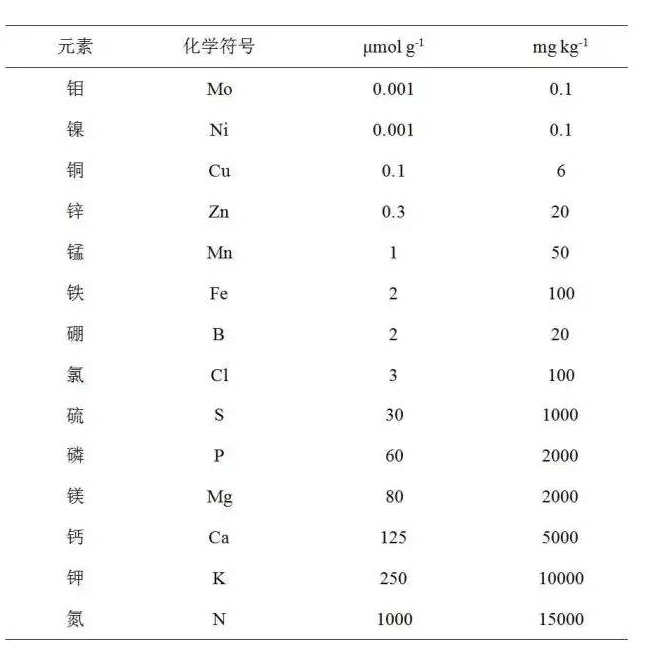
The fertilizer requirements and yield levels of a crop per yield are usually taken into account in the development of crop nutrient management plans.In a high-yield agricultural production system, nutrients taken away by crops should be fully replenished to maintain the supply capacity of soil nutrients.Since the implementation of "soil testing and formula fertilization", the nutrient management principle of "a large number of elements phased regulation, medium and micro elements due to lack of supply" has been adhered to, and rational fertilization has been carried out according to the supply capacity of soil and the nutrient demand of plants.
Are shown in table 2 for different crops according to relevant data summary of fertilizer consumption per unit of production, can be seen from the table, the plant to the demand of calcium and magnesium in fact than the NPK is big, just usually soil or irrigation water contains magnesium can meet the growth, but in high-yield agriculture system, if it is carried out in accordance with the amount of elements in the original definition to fertilization management,Magnesium deficiency can easily occur on some soils and is not conducive to yield formation.
Table 2 Fertilizer required per unit yield of different crops (kg/1000kg)
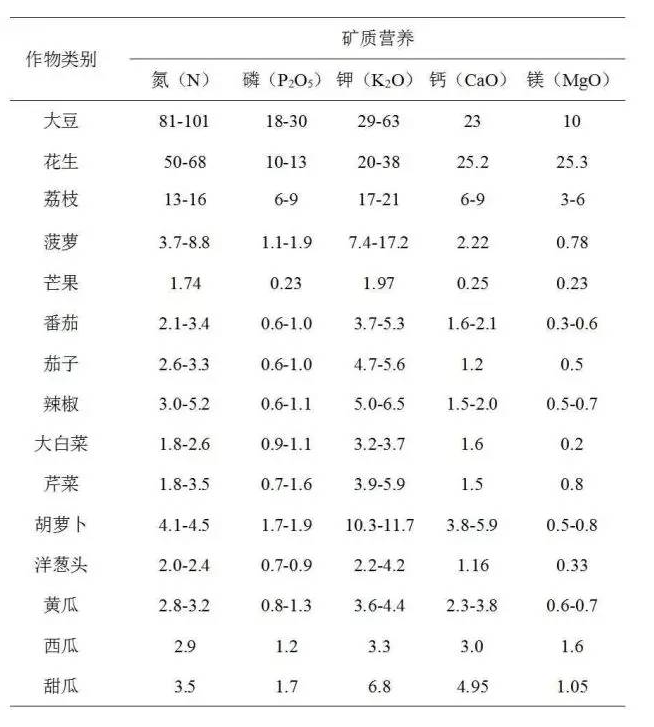
The sensitivity of different crops to magnesium also varies (Table 3). For example, citrus and potato crops are very sensitive to magnesium. When there is insufficient magnesium in the soil, symptoms of magnesium deficiency can be easily observed on the leaves.The yield and quality of soybean, grape and fruit trees which are sensitive to magnesium can be improved by applying magnesium fertilizer.Crops such as rice and wheat are not sensitive to magnesium.In fact, the critical concentration of magnesium in plants varies greatly by plant species, variety, organ, and developmental stage, and these are all factors to be considered in the management of magnesium nutrition.
Symptoms and causes of magnesium deficiency
Magnesium is easy to move in plants, and the deficiency of magnesium in plants is first shown in the middle and lower old leaves.In dicotyledonous plants, it is manifested as interveinal chlorosis, which gradually changes from light green to yellow or white, with brown or purplish red spots of varying sizes, but the veins remain green, and in severe cases, premature senility and shedding of leaves.Gramineae show dark green spots at the base of the leaves and light yellow at the rest. In severe magnesium deficiency, the leaves are discolored and streaked, and necrotic spots appear at the tip of the leaves.
Magnesium deficiency in crops tends to occur when fruits or storage organs are swollen.Magnesium will transfer to the fruit in the ripening process, the old leaves and the leaves near the fruit turn yellow first, and the symptoms are obvious.When seed germination and seedling growth, magnesium is transported to the needed parts, so it is not easy to appear magnesium deficiency symptoms in the early stage of plant development, magnesium deficiency mostly occurs in the middle and late stage of plant growth.If it occurs in the late stage, it usually does not affect the yield too much. If it occurs in the early stage, both the yield and quality will be seriously affected.
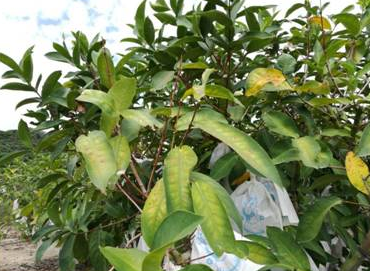
Fig. 1 symptoms of magnesium deficiency in lotus leaves
The deficiency of magnesium in plants is usually caused by two factors: first, the low content of magnesium in the soil cannot meet the nutrient requirements of plants;Second, the content of magnesium in soil is not low, but due to the interaction of other nutrient ions in soil, the uptake of magnesium by roots is low.
Magnesium deficiency due to low magnesium content in the soil
It is reported that 36% of the cultivated land in China has magnesium deficiency in soil (exchangeable magnesium content less than 25mg/kg), mainly in the south of the Yangtze River, which covers a very large area.Magnesium in soil is originally derived from the weathering of magnesium-bearing minerals in the soil, because the reservoir capacity of magnesium is different due to different parent materials.The southern soil is mainly developed from granite, red sandstone and Quaternary red clay and has low magnesium content.Soils derived from soil-forming minerals such as serpentine and dolomite have high magnesium content.
There are three forms of magnesium ion in soil, namely, mineral magnesium (magnesium in mineral lattice), exchangeable magnesium (magnesium adsorbed on the surface of soil static charge) and water-soluble magnesium (magnesium dissolved in soil solution).Mineral magnesium is the main component of soil magnesium, accounting for about 70%-90% of the soil magnesium, mineral magnesium can only be converted into absorbable magnesium through weathering, but weathering is a very long process, so the mineral magnesium is basically unable to be absorbed and utilized by plants.The exchangeable magnesium and the water-soluble magnesium are mobile and easily absorbed by plants, and are called effective magnesium.
The adsorption capacity of exchangeable magnesium and magnesium ions in soil and soil colloid is weak, and they are easy to be replaced down into the soil solution and become water-soluble magnesium, especially in the acidic soil in the south, where the activity of soil cation is very high. The magnesium ions entering the soil solution are easy to be washed and lost under rainy conditions.On sandy soils, not only are nutrient contents low, but leaching losses are more likely to occur.
Table 4 Reference indexes of soil nutrient abundance (mg/kg)
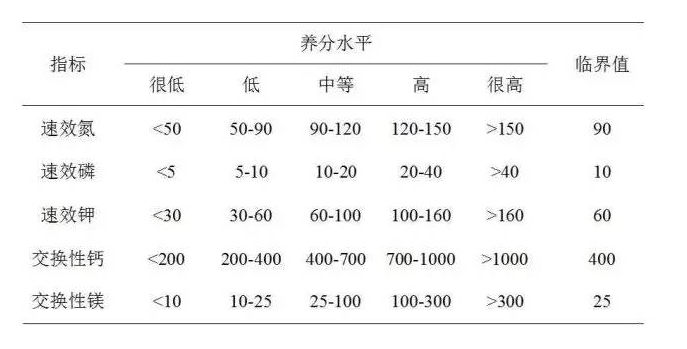
For the plots with low soil magnesium background value and prone to loss, soil nutrient status can be determined by soil detection and rational fertilization.According to the soil nutrient abundance index (Table 4), when the soil exchangeable magnesium content is less than 25mg/kg, the soil magnesium content is low, which will affect the normal growth of crops.For some crops with high demand for magnesium, supplemental magnesium is needed when the soil exchangeable magnesium content is less than 50mg/kg.Soil nutrition diagnosis can be used as an important reference to guide nutrient management in the field.
Magnesium deficiency due to soil ion interactions
There are interactions among nutrient elements in the soil. Magnesium ions are cations. Excessive content of other cations in the soil will inhibit the absorption of magnesium ions and antagonism between ions will occur.In acidic soils, symptoms of magnesium deficiency may occur not only because of low soil magnesium content, but also because of high soil H+ and Al3+ content.In high-yield agricultural systems, a large amount of potassium fertilizer is an important cause of magnesium deficiency in plants.
Table 5 Effects of K+ and Ca2+ (0.25mm) on Mg2+ absorption in barley seedlings

In a culture experiment with barley, the content of magnesium ions in roots and shoots of barley was measured after a period of time with the addition of calcium and potassium ions in the culture medium labeled with 28Mg as isotopes.Results showed that (table 5), compared with single supply magnesium ions, increasing calcium ions after the barley root and aboveground magnesium ion uptake decreased obviously, and increase supply calcium and potassium ions, greatly reduce the barley root system and aboveground, the content of magnesium ions in indicate that the presence of Ca2 +, K + cations inhibited root absorption of magnesium 2 +.
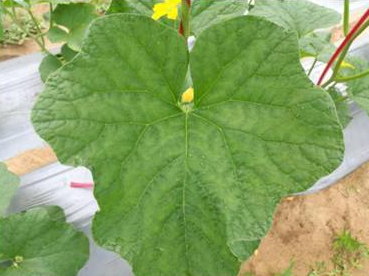
Figure 2. Early symptoms of magnesium deficiency in Hami melon leaves
Potassium and magnesium antagonism is often observed in the field.During the cultivation of Hami melon in Hainan, the symptoms of magnesium deficiency were observed in the middle and lower leaves of the plant from the time when the fruit branches were left to the time when the top leaves were fully expanded. After pollination, the symptoms gradually reduced from the bottom leaves to the upper leaves until they were relieved.The reason for this phenomenon may be that the content of magnesium ions in sandy soil was not high when high potassium fertilizer was applied when the fruit branches were left, so the absorption of magnesium ions was inhibited by a large amount of potassium input. Moreover, the plant did not take the top off at this period, and the expansion of new leaves required a considerable amount of magnesium, resulting in the deficiency of magnesium in the plant.However, after the top of the plant is removed, the top leaves are fully unfolded. At this time, the magnesium absorbed by the root system is redistributed to the middle and lower leaves to relieve the symptoms of magnesium deficiency.
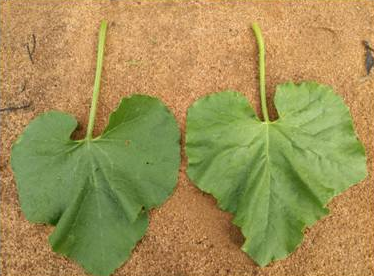
Fig. 3 Normal Hami melon leaves (left) and yellowing mottled leaves (right)
In order to verify the above inference, the motle-shaped leaves and normal leaves of three Hami melon varieties were collected in the field and the contents of K and Mg in the dry matter of leaves were determined.As can be seen from the trend, the potassium content of mottled leaves is generally higher, while the magnesium content is lower than that of normal leaves, indicating that the interaction between potassium and magnesium ions leads to the symptoms of magnesium deficiency and mottled leaves.
Table 6 Diagnostic results of Hami melon leaves
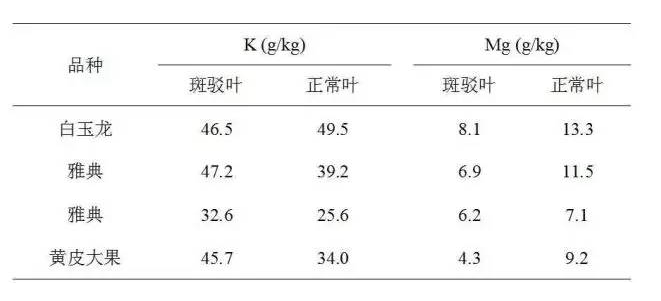
In addition to potassium and calcium, too many other cations in the soil will also affect the absorption of magnesium, such as Mn2+, NH4+, etc. Similarly, there are similar interactions between anions with the same charge.The reason of its occurrence is related to the nutrient ion absorption mechanism of root system.
Nutrient absorption by roots occurs at the interface of root and soil. Nutrient ion absorption is actually the transmembrane transport through the cell membrane, and the transmembrane transport of ions needs the help of transporters existing in the biofilm.There are three types of transporters: channel, carrier and pump (as shown in Figure 4).The transport along the direction of the electrochemical potential gradient is called passive transport and does not need to consume energy. The diffusion through channels and carriers is passive transport.The transport in the direction of inverse electrochemical potential gradient is called active transport, which requires energy consumption (ATP), and the transport through ion pump is active transport.
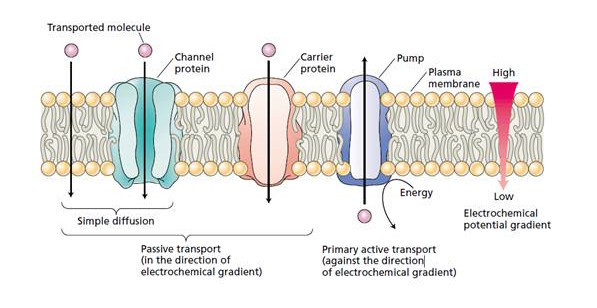
Fig. 4 Transporters on Biofilm (Schematic Diagram)
Generally, Ca2+, Mg2+, K+ and other cations enter cells through passive transport along their electrochemical gradient (active transport can also be carried out when the concentration of external ions is low), but K+ and Ca2+ mainly enter cells through channel proteins, while Mg2+ enters cells through carrier proteins.Channels are a kind of membrane proteins that form selective channels in the membrane. As long as the channels are open, ion transport across the membrane is very rapid.However, the carrier protein does not form a completely transmembrane pore structure. It needs to bind with the transported material first, then undergo conformational changes, and finally transport the ions to the other side of the membrane.Carrier transport is slow compared to channel transport.
The antagonistic mechanism of K+, Ca2+ and NH4+ on Mg2+ absorption lies in the competition of negative potential inside cells, while the antagonistic effect of Mn2+ and Cu2+ plasma on Mg2+ lies in the competition of binding sites. Therefore, when the external cation concentration is high, the absorption of Mg2+ by roots will be inhibited.
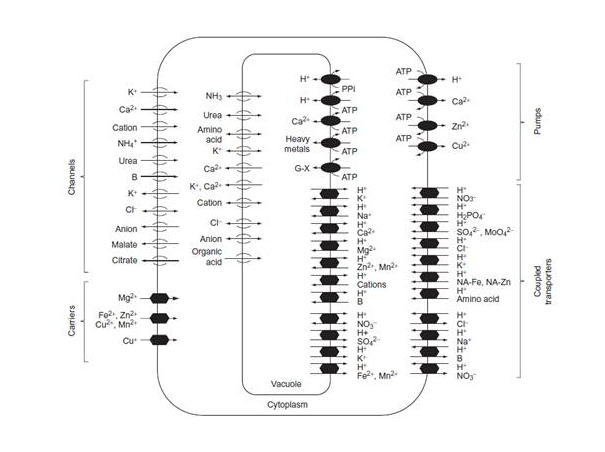
Fig. 5 Transporters on the plasma and vacuolar membranes of plant cells
In conclusion, the partial application of potassium and ammonium nitrogen fertilizers during fertilization, as well as the application of a large amount of lime to regulate soil acidity, may aggravate the phenomenon of plant magnesium deficiency.But not all cations are antagonistic, at low concentrations will promote mutual absorption.Therefore, it is very important to pay attention to the balanced application of nutrients in the field management.
Magnesium supplementation in plants
To supplement magnesium, we should take targeted measures according to the causes of magnesium deficiency in plants.In view of the deficiency of magnesium in the soil or the crop needs a large amount of magnesium, a proper amount of magnesium fertilizer should be added;In view of the deficiency of magnesium caused by the imbalance of soil nutrients, it is necessary to rationally supplement magnesium fertilizer and control the input of other nutrients.
The use of magnesium fertilizer
Magnesium fertilizers can be divided into water-soluble, slightly soluble and insoluble magnesium fertilizers according to solubility.Water-soluble magnesium fertilizer dissolves quickly and is easily absorbed by plants, such as magnesium sulfate, potassium magnesium sulfate, magnesium chloride, etc.Micro-soluble magnesium fertilizer, such as calcium magnesium phosphate fertilizer, dolomite powder, magnesium ammonium phosphate, etc., has a slow fertilizer effect and a long lasting effect.Insoluble magnesium fertilizer, such as serpentine and magnesite, is the raw material for processing magnesium fertilizer and magnesium salt. Generally, it is not directly applied as fertilizer.
The selection of magnesium fertilizer should consider the growth characteristics of crops, soil conditions and the convenience of field management.For long-term crops or as a base fertilizer, long-acting magnesium fertilizer with slight solubility, such as calcium magnesium phosphate or magnesium ammonium phosphate, can be selected. Calcium magnesium phosphate is alkaline and plays a certain role in regulating soil acidity.For short-term crops or as top dressing, magnesium sulfate and magnesium chloride can be selected. Plots with irrigation facilities can be applied in combination with irrigation system.For short-term relief of plant magnesium deficiency symptoms, it is also possible to supplement magnesium fertilizer through external topfertilizer (foliar fertilizer). Magnesium sulfate is a common foliar magnesium fertilizer, and there are some organic chelating/complexing products of foliar magnesium fertilizer on the market, such as magnesium sugar alcohol, LSA-magnesium (lignosulfonate complexed magnesium), etc., which have better foliar absorption effect.
The application amount of magnesium fertilizer should be determined according to the fertilizer requirement of the crop, the nutrient status of the soil, the nutrient utilization rate and the stage nutrient demand.Production, the general base fertilizer mu application 1-1.5kg Mg, magnesium deficiency symptoms can be applied to 5-10 kg magnesium sulfate per mu, and then observe the effect.
Balanced fertilization
In view of the competitive inhibition of Mg2+ uptake by K+, Ca2+, NH4+ and other soil cations at high concentrations, a large amount of the above nutrients should be avoided in field management. Excessive nutrients will not only aggravate the deficiency of other nutrients, but also cause low nutrient utilization rate and easy loss due to excessive fertilization.It's a burden on the plant, the soil, the environment, and the cost of production.
For some fast-growing fruits and melons and crops with high short-term potassium demand, magnesium and other elements should be supplemented at the same time, or magnesium fertilizer should be supplemented in foliage to ensure sufficient supply of magnesium when a large amount of potassium fertilizer is added.When using lime to regulate soil acidity, it is necessary to consider the influence of a large amount of calcium input on other nutrients, and increase the input of magnesium fertilizer appropriately to maintain a balanced supply of nutrients in the soil.
